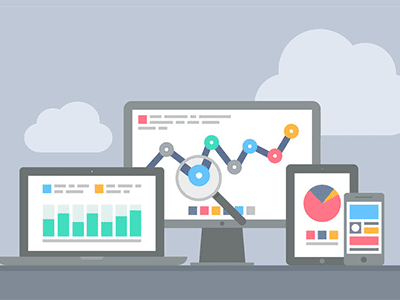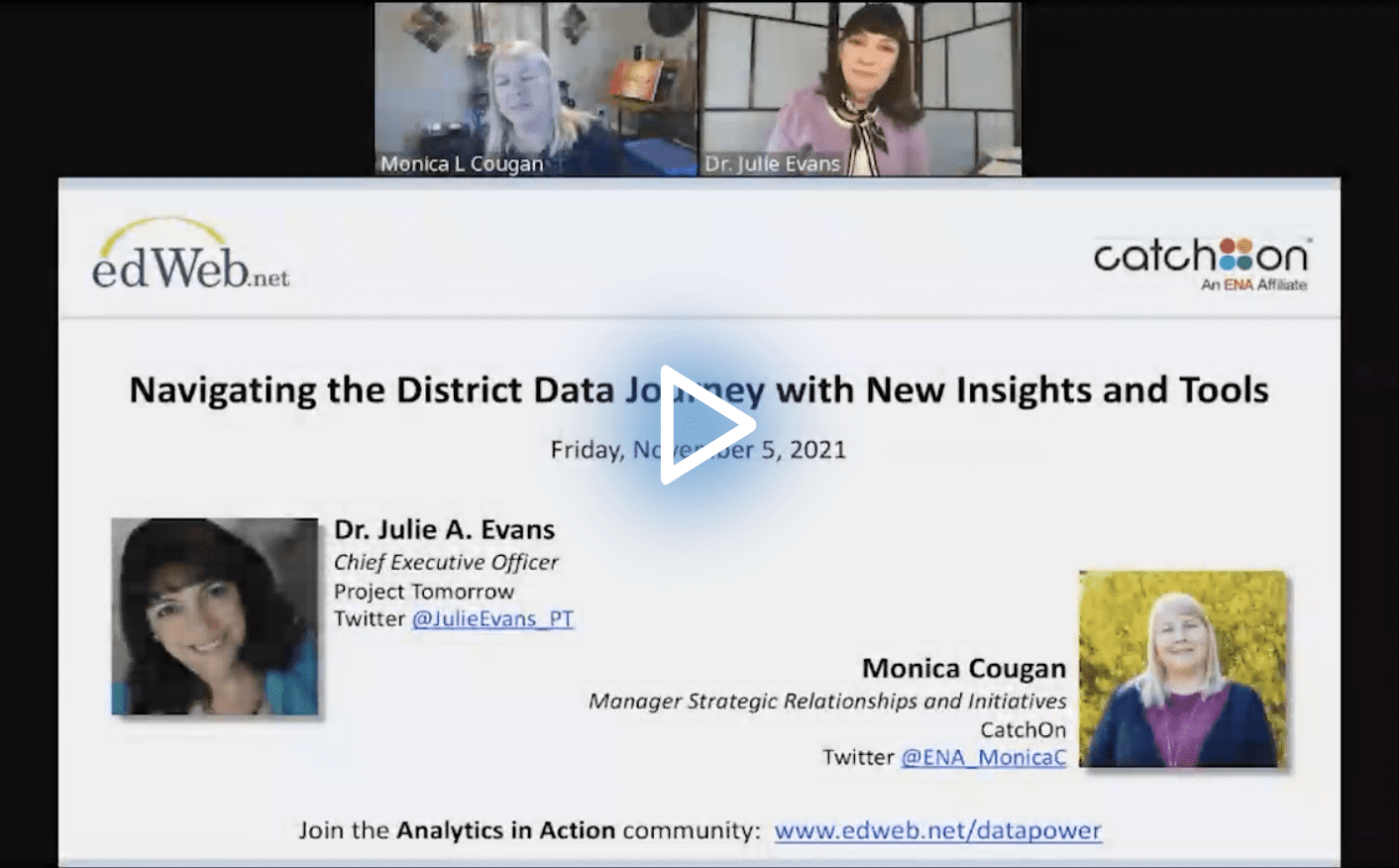Diving Deeper Into District Data to Drive Good Decision Making
Blog post by Robert Low based on this edLeader Panel
As school districts continue to amass large amounts of data about students, teachers, and educational resources each year, using the data in ways that lead to effective decisions and inform stakeholders has become increasingly important.
Strategies for analyzing and utilizing district data were discussed in a recent edLeader Panel, sponsored by CatchOn, An ENA Affiliate, which featured Dr. Julie A. Evans, Chief Executive Officer of Project Tomorrow, and Monica Cougan, Manager of Strategic Relationships and Initiatives for ENA and CatchOn.
Dr. Evans pointed out that each district has a unique journey to take with its data, which should be aligned with the district’s mission and goals. She also emphasized that subjective data, such as input from students and teachers, can be combined with numerical data in order to reach decisions and take actions that result in better outcomes.
Data Usage
Setting goals for the use of data can help to streamline and focus the compilation and analysis process. District data goals may include evaluating the efficacy of learning models and related resources, addressing equity concerns, or supporting communication with stakeholders. A district may also want to use data as part of its efforts to create and sustain a culture of innovation.
In addition, districts may also have more focused, shorter-term objectives that can be achieved through effective data reporting. Many chief information officers and other administrators now rely on “digital dashboards” to monitor technology usage metrics such as student engagement, personalized learning, trending apps, and other factors that can show on a daily, weekly, or monthly basis what is happening in classrooms and throughout district networks.
Combining the short-term and long-term data can enable district administrators to determine the value of their investments and the correlation with student success while providing greater visibility and transparency about those topics to district stakeholders. In particular, Dr. Evans noted that school boards increasingly want to understand more about the digital products their districts are buying or leasing. Key questions include how regularly the products are being used, whether some are redundant, how they correlate with student performance, and how student privacy is being protected.
And in the aftermath of the switch to distance learning during the pandemic, district administrators may also want to use data to develop a more coordinated approach to tech usage. During the 2020-21 school year, many teachers and schools were improvising and using free software or services provided by vendors, not all of which were fully understood and monitored by district officials. With the return to the classroom, and the growing awareness of issues such as privacy violations and ransomware attacks, tech-usage data can play an important role in protecting students and district systems.
Data Analysis
Cougan and Dr. Evans discussed a number of ways that data can be analyzed in the context of district priorities. Some districts are looking at the return on investment in software, by comparing the cost and levels of student engagement, in order to see which licenses should be renewed and which can be allowed to lapse. In another example cited during the discussion, one district looked at the use of the same software across different schools in order to see if there were equity or implementation issues.
These types of analyses provide a basis for data-driven decisions, but further consideration and discussion of the data are essential. If there are variations among schools in software usage, for example, the next questions may be why and what usage issues need to be addressed. Perhaps more professional learning and other types of support are needed, or is there just a mismatch between the product and the students or teachers?
Further consideration of district data in this way is a crucial part of the decision-making process, which should include thinking about the reasons behind the data and sharing the data with stakeholders to gain additional perspectives and insights about what is occurring and why. This “democratization of data” is pivotal, not just to use the information most effectively, but also because informing stakeholders leads to greater understanding and support for district decisions.
Other recommendations from Cougan and Dr. Evans included using the data to tell a story rather than just presenting a collection of numbers and aligning that story with the district’s mission and vision. Dr. Evans also emphasized that the data story should be “catalytic” in that it leads to appropriate changes and action, which then can be monitored further to confirm they are producing the desired outcomes.
This edWeb broadcast was sponsored by CatchOn, An ENA Affiliate
Watch the Recording Listen to the Podcast
About the Presenters
Dr. Julie A. Evans is the CEO of Project Tomorrow and the founder of the heralded Speak Up Research Project. She serves as the chief researcher on the Speak Up Project as well as leading research efforts on the impact of innovative learning models and interventions in both K-12 and higher education. As a national thought leader and influencer, Dr. Evans leverages her career experiences as a tech entrepreneur and nonprofit leader to stimulate new discussions within the education ecosystem. She is a graduate of Brown University and earned her doctorate in educational leadership from the University of California, San Diego. Dr. Evans serves on several boards and advisory councils and is a frequent speaker and writer on digital learning. She was named in 2020 as the winner of EdTech Digest’s National Leader award. Dr. Evans is the longest-serving woman executive in the education technology nonprofit sector.
Monica Cougan is the Manager of Strategic Relationships and Initiatives at ENA and CatchOn, where she leverages her more than 35 years of experience in education and technology to help schools make the most of new technology. Throughout her career, Monica has been an evangelist for the adoption of technology as a transformative educational tool. She also has extensive experience helping K-12 schools implement 1:1 programs and in disseminating problem-based and project-based learning methodologies that focus on helping each student develop his or her own voice. Throughout Monica’s extensive career, she has sought out the diverse experiences required to know how to implement positive changes in education: she has served as a classroom teacher, adjunct professor, and education consultant for national, technology-based curriculum companies. Away from the classroom, she has served as an independent math consultant, worked in curriculum development, evaluated research on school-based programs, and developed professional learning opportunities for educators looking for a new mastery of technology.
Join the Community
Analytics in Action is a free professional learning community on edWeb.net for school technology leaders, superintendents, curriculum and instructional leaders.
CatchOn is a user-friendly data analytics tool that collects real-time data on every device, enabling school districts to make data-informed decisions about the apps and online tools their educators and students are using. In 2018, CatchOn joined forces with ENA, a leading provider of comprehensive technology solutions to education institutions and libraries across the nation. Collectively, CatchOn and ENA leverage their respective resources and expertise to deliver critical services and solutions that help school districts produce positive outcomes in the communities they serve.






Comments are closed.